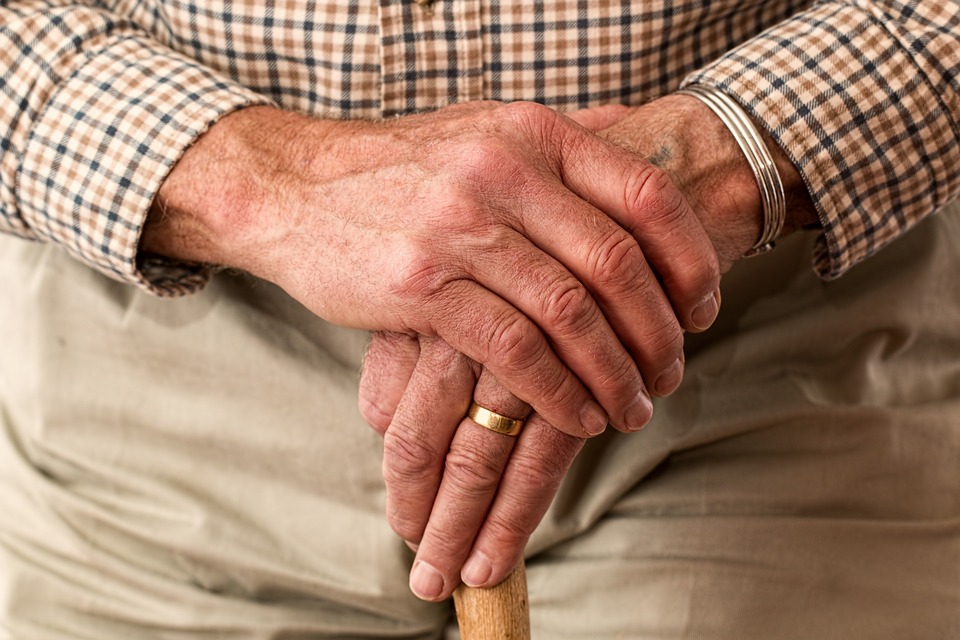
What is healthy living?
“Healthy living” usually refers to a balance between physical and mental health. Often, physical and mental health are connected, so that changes in one can directly affect the other. Therefore, some tips for healthy living will include ways to improve emotional and mental health.
82306 This article provides tips on how to improve your lifestyle to lead a healthier life. It covers some of the major components of a healthy lifestyle, including what to do and what to avoid doing.
Healthy eating (diet and nutrition)
The frequency of meals varies depending on age group. For example, infants may feed every four hours, while older children and adults only need to eat three times a day. People of all ages often snack between meals.
Tips for everyday healthy eating:
- Eat three healthy meals a day (breakfast, lunch, and dinner); it is important to remember that dinner does not have to be the largest meal.
- The bulk of food consumption should consist of healthy foods, such as fruits, vegetables, whole grains, and fat-free or low-fat milk products.
- Incorporate lean meats, poultry, fish, beans, eggs, and nuts (with emphasis on beans and nuts) into a healthy diet.
- Choose foods that are low in saturated fats, trans fats, cholesterol, salt (sodium), and added sugars; look at the labels because the first listed items on the labels comprise the highest concentrations of ingredients.
- Healthy snacks are OK in moderation and should consist of items like fruit, whole grains, or nuts to satisfy hunger and not cause excessive weight gain.
- Avoid eating a large meal before sleeping to decrease gastroesophageal reflux and weight gain.
- If a person is angry or depressed, eating will not solve these situations and may make the underlying problems worse.
- Avoid rewarding children with sugary snacks; such a pattern may become a lifelong habit for people.
- Avoid eating raw or undercooked meats of any type.
Reduce salt and sugar intake
- When shopping, choose products with lower sodium content.
- When cooking, salt can be substituted with spices, increasing the variety of flavors and tastes.
- When eating, it helps not to have salt at the table, or at least not to add salt before tasting.
Sugar gives foods and drinks sweetness and an attractive taste, but eating too much sugar can lead to health problems. It’s best to enjoy sugary items only occasionally as a treat. An alternative to using sugar is to use fruit to sweeten foods and drinks.
Get on the move, make it a habit!
Being physically active is important for people regardless of their weight or health condition. It helps us burn off extra calories, is good for our heart and circulatory system, helps maintain or increase muscle mass, makes it easier to focus, and improves our overall health and well-being. We don’t have to be top athletes to get moving – 150 minutes per week of moderate physical activity is advised, and can easily become part of our daily routine. Taking the stairs instead of the elevator, parking the car a little further away, or going for a brisk walk on our lunch break are all easy ways to do this.
- Use the stairs instead of the elevator.
- Go for a walk during lunch breaks (and stretch in our offices in between).
- Make time for family weekend activities.
Eat regularly, control the portion size
To maintain a healthy diet, you should eat a variety of foods regularly and in the correct portions.
If you don’t eat breakfast, you will be really hungry later and more likely to overeat. It’s better to have a small breakfast to tide you over until lunch instead of skipping meals altogether.
If we are mindful of how much food we are consuming, we can avoid overeating and the extra calories that come with it. This way, we can enjoy all the foods we like without having to get rid of any of them.
- Cooking the right amount makes it easier to not overeat.
- Some reasonable serving sizes are: 100 g of meat; one medium piece of fruit; half a cup of raw pasta.
- Using smaller plates helps with smaller servings.
- Packaged foods, with calorie values on the pack, could aid portion control.
- If eating out, we could share a portion with a friend.
Exercise for physical and mental health
Physical health
If people don’t get physical activity, they won’t live a healthy lifestyle. This can cause obesity, weakness, lack of endurance, and poor overall health, which may result in disease.
Exercising on a regular basis can bring about multiple benefits for elderly people, including reducing the likelihood of age-related muscle deterioration, improving balance and flexibility, and warding off conditions such as stroke, heart disease, diabetes, and obesity. Furthermore, exercising can help slow down the onset of osteoporosis by strengthening bones.
Tips for exercising regularly:
- Thirty minutes of modest exercise (walking is OK) at least 3 to 5 days a week is recommended, but the greatest health benefits come from exercising most days of the week.
- Exercise can be broken up into smaller 10-minute sessions.
- Start slowly and progress gradually to avoid injury or excessive tiredness or fatigue. Over time, build up to 30 to 60 minutes of moderate to vigorous exercise every day.
Physical inactivity and lack of exercise are associated with:
- Heart disease and some cancers.
- Type II diabetes mellitus (also known as maturity or adult-onset, non-insulin-dependent diabetes).
- Weight gain.
Mental health
There are a few things you can do to support your mental health. First, take care of your physical health by eating right and exercising. Second, find ways to cope with stressors in your life. Third, make time for things that make you happy. Finally, reach out for help if you need it.
Tips for improving mental health:
- Get enough sleep daily; the CDC recommends the following by age group (naps inclusive); 12-18 hours from birth to 2 months, 14-15 hours from 3-11 months of age, 12-18 hours for 1-3 years of age, 11-13 hours for 3-5 years of age, 10-11 hours for 5-10 years of age, 8.5-9.5 hours for 10-17 years of age and those 18 and above need 7-9 hours of sleep. Elderly people need about 7-9 hours but do not sleep as deeply and may awaken at night or wake early, so naps (like kids need) allow them to accumulate a total of 7-9 hours of sleep.
- Take a walk and reflect on what you see and hear at least several times per week.
- Try something new and often (eat a new dish, try a different route to work, go to a new museum display).
- Try to make some leisure time to do things that interest you every week (hobby, sport).
- Learn ways to say “no” when something occurs that you do not want to do or be involved with.
- Let yourself be pleased with your achievements, both big and small (develop contentment).
- Seek help and advice early if you feel depressed, have suicidal thoughts, or consider harming yourself or others.
Start now! And keep changing gradually
- Skipping breakfast? A small bowl of muesli and a piece of bread or fruit could help slowly introduce it into our routine.
- Too few fruits and vegetables? To start with, we can introduce one extra piece a day.
- Favorite foods high in fat? Eliminating them abruptly could fire back, and make us return to the old habits. We can choose low fat options instead, eat them less frequently, and in smaller portions.
- Too little activity? Using the stairs daily could be a great first move.
There are a few things you should avoid if you want to live a healthy lifestyle. These include: 1. Eating Junk Food 2. Not Exercising 3. Smoking 1. Eating a lot of junk food can lead to obesity and other health problems. 2. Not getting enough exercise can lead to a sedentary lifestyle and obesity. 3. Smoking cigarettes can lead to cancer and other diseases.
Avoid tobacco use
Smoking cigarettes kills more than 480,000 Americans each year. Tobacco use is a leading cause of death in the United States, according to the National Cancer Institute. Cigarette smoking is responsible for the death of more than 480,000 Americans annually.
- Stop smoking tobacco (it takes about 15 years of nonsmoking behavior to achieve a “normal” risk level for heart disease for those that smoke).
- Stop using chewing tobacco to avoid oral cancers.
Tips for quitting tobacco:
- Quitting smoking is difficult to accomplish. Tobacco contains nicotine, which is addictive. Some smokers can quit “cold turkey,” but for most, quitting smoking requires a serious life-long commitment and an average of six quitting attempts before success.
- Quitting smoking efforts may include behavior modification, counseling, use of nicotine chewing gum (Nicorette Gum), nicotine skin patches (Transdermal Nicotine), or oral medications such as bupropion (Zyban).
Avoid excessive alcohol consumption
Adverse consequences of excessive alcohol consumption:
- Chronic, excess alcohol consumption is the major cause of liver cirrhosis in the U.S.
- Liver cirrhosis can cause internal hemorrhage, fluid accumulation in the abdomen, easy bleeding and bruising, muscle wasting, mental confusion, infections, and in advanced cases, coma, and kidney failure. It can eventually lead to liver cancer.
- Alcohol accounts for 40%-50% of deaths from automobile accidents in the U.S.
Tips for limiting alcohol intake:
The first step in overcoming alcoholism is for the individual to admit that they have a problem and make a commitment to fixing it. Twelve-step programs, which were created by Alcoholics Anonymous, can be an effective way to treat alcoholism. Psychologists have also developed programs to help people deal with emotional stress and avoid behaviors that could lead to them drinking too much. Families often play a key role in helping someone recover from alcoholism. There are also medication that can be used to prevent relapses and withdrawal symptoms after someone has been intoxicated for a short period of time or for a long period of time.
Avoid high-risk sexual behaviors
In other words, practices such as unsafe sex, multiple sexual partners, or sharing needles can result in STIs, cancer, and other diseases. Therefore, it is important to be aware of the risks involved in these activities and take precautions to protect oneself from infection.
- Multiple sex partners
- Sex partners with a history of intravenous drug use or venereal disease (sexually transmitted diseases or STDs)
Adverse consequences of high-risk sexual behavior:
- Transmission of HIV and other sexually transmitted diseases (chlamydia, gonorrhea, syphilis, genital herpes).
- Transmission of hepatitis B (50% of hepatitis B infections are due to sexual transmission) and, in rare instances, hepatitis C.
- Transmission of human papillomavirus (HPV), which can cause genital warts and anogenital carcinomas, most commonly cancer of the uterine cervix.
- Unplanned pregnancy.
Tips for avoiding unsafe sex:
- Avoid unprotected sex (sex without barriers such as a condom) outside an established, committed, monogamous relationship.
- If you plan to have sex and are unsure of your partner’s health status, use a condom.
Avoid other high-risk behaviors
High-risk behaviors include but are not limited to:
- Driving under the influence of alcohol or drugs.
- Driving while sleep-deprived.
- Reckless driving and speeding, also called “road rage”.
- Possession of firearms and guns without proper training and storage.
Adverse consequences of high-risk behaviors:
- Motor vehicle accidents account for 40%-50% of accidental deaths.
- Firearms and guns account for a significant proportion of deaths among adolescents due to male suicide and homicide.
Tips for avoiding risks:
- When driving, use seat restraints on all passengers, both front and rear seats.
- Do not drink and drive.
- Do not drive if sleep deprived.
- Avoid unnecessary distractions and focus on the road and traffic while driving (avoid texting, talking on cell phones, eating, applying makeup, or other distractions).
- Use helmets while riding bicycles and motorcycles. Helmet use reduces deaths from motorcycle accidents by 30% and serious head injuries by 75%.
- Obtain proper training in the use and storage of guns and ammunition.














